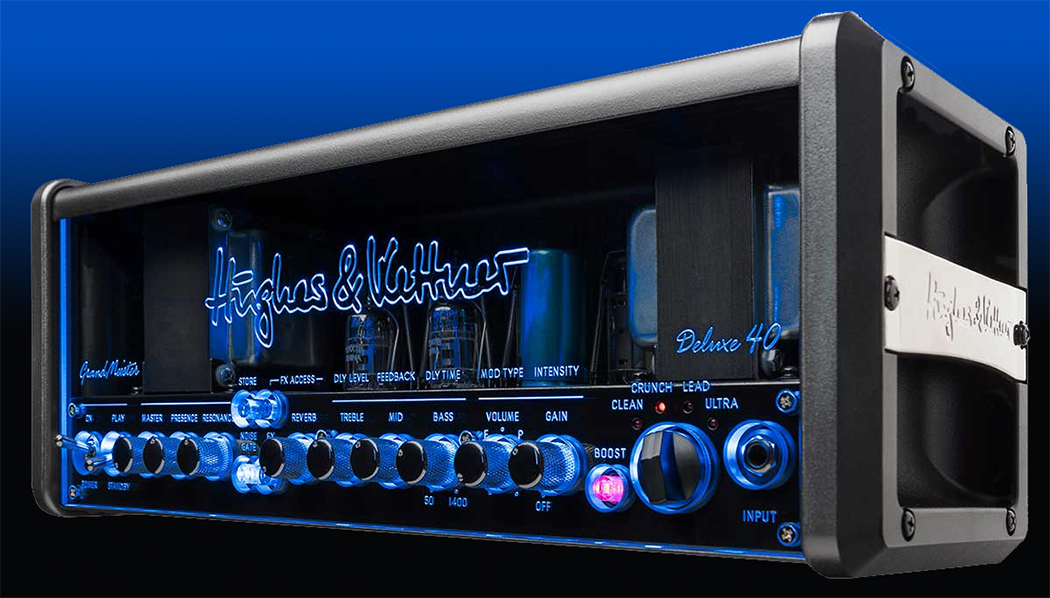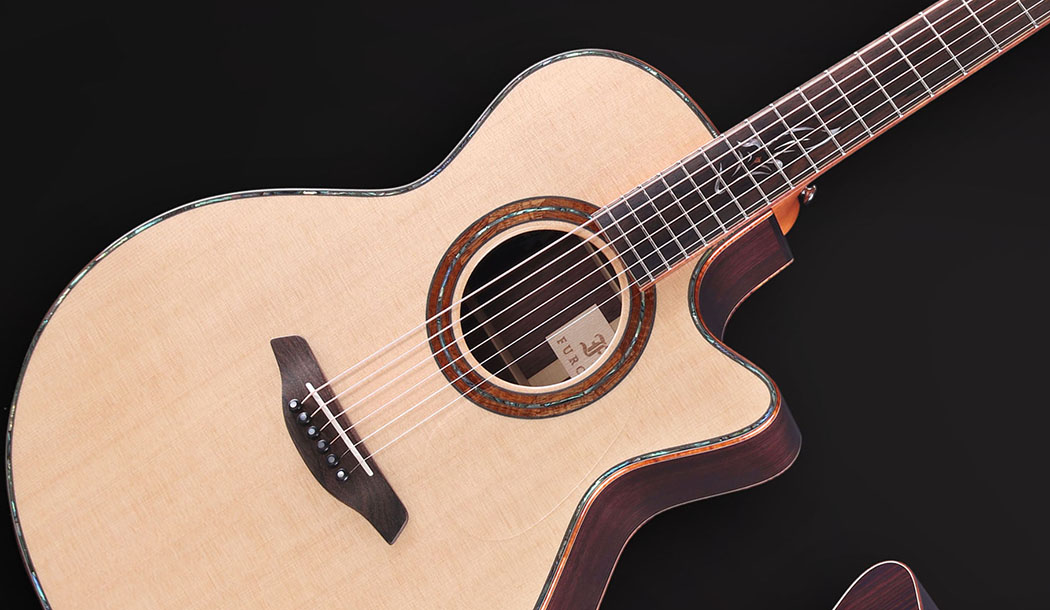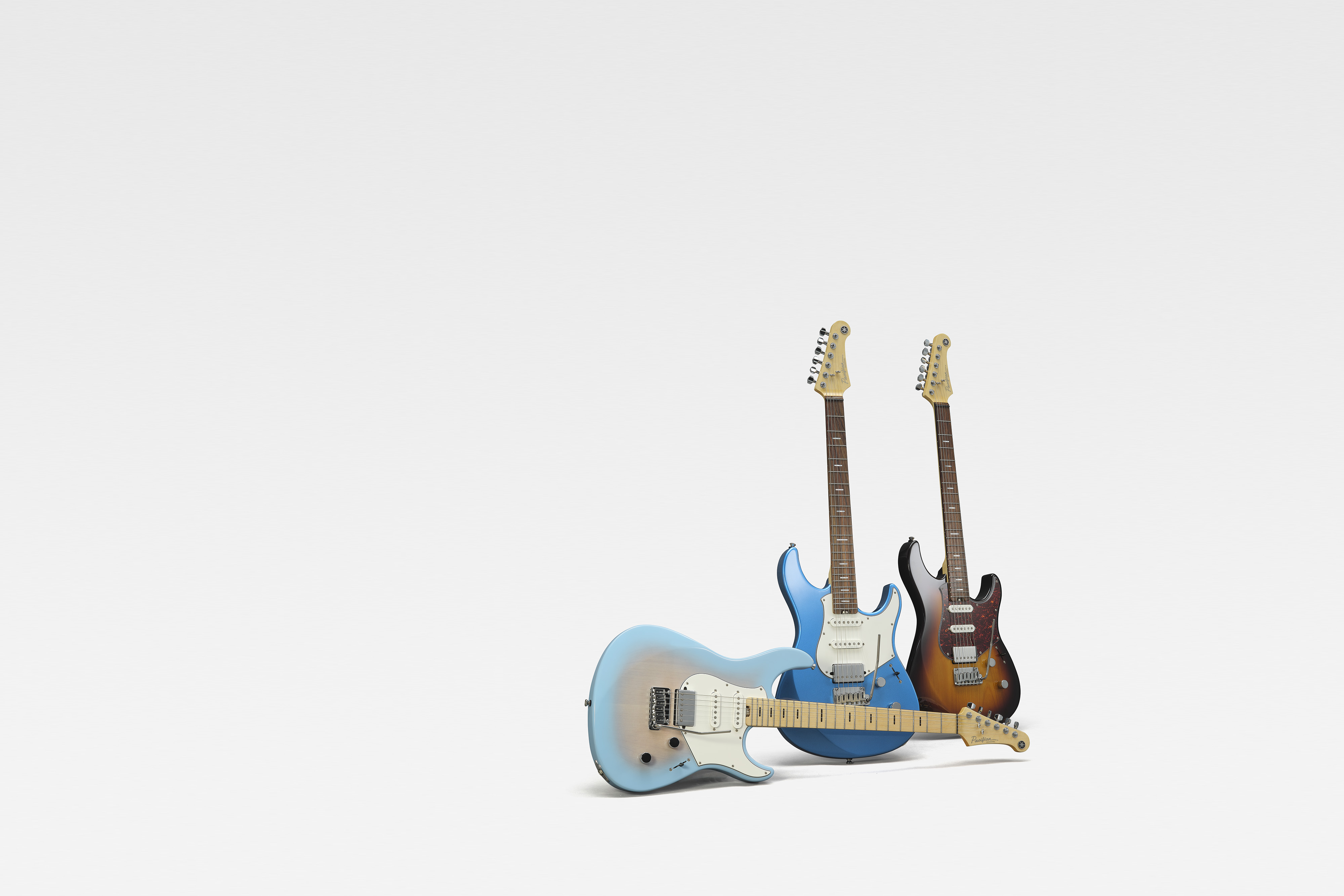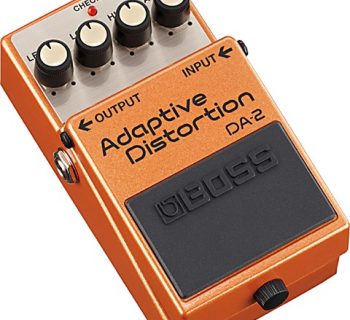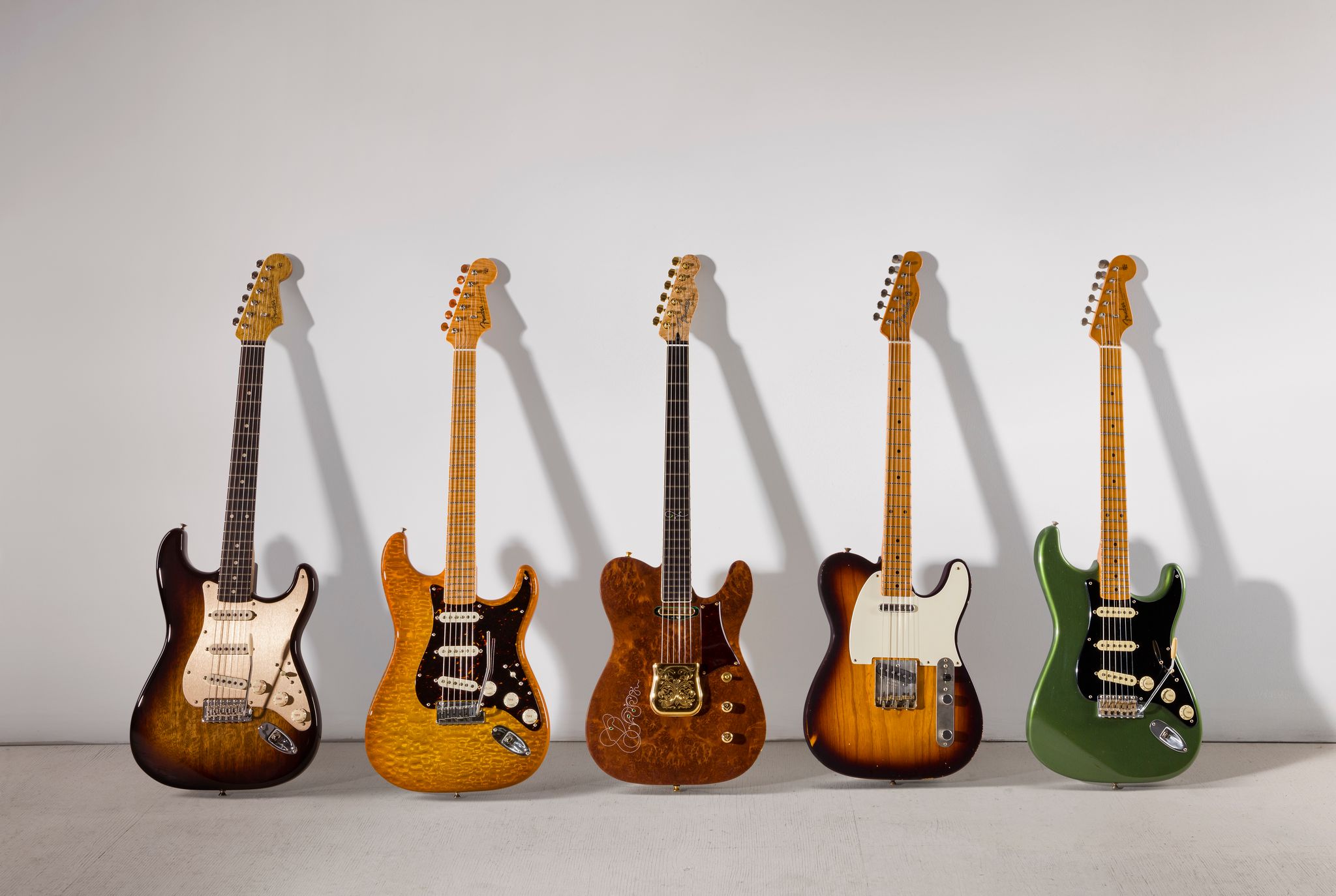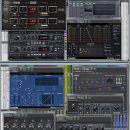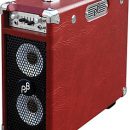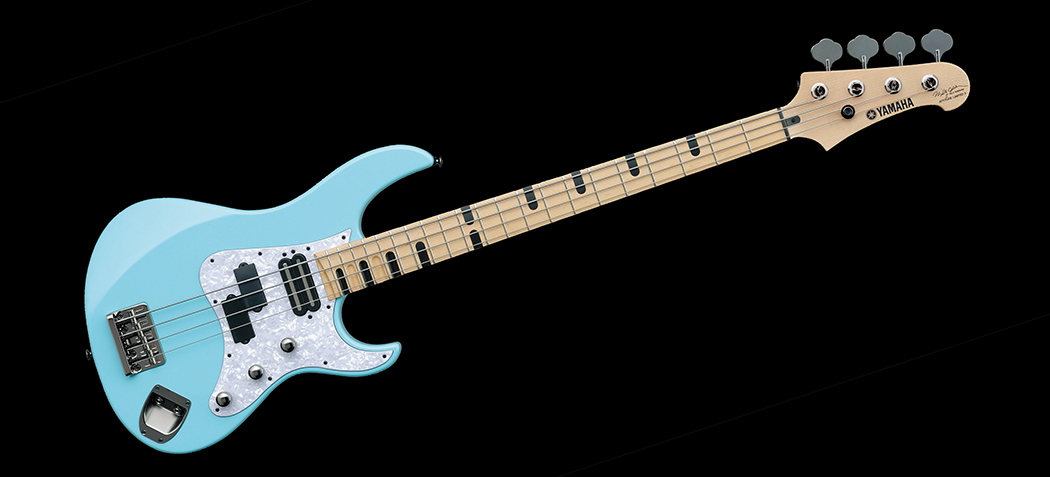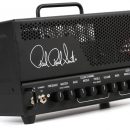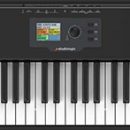 The Ibanez RG family of guitars are hard rock staples, renowned for their fast playability, spot-on tuning, and great humbucker tones. And within the massive RG family, different models span different price points to address rock and metal players at every stage of their musical development.
The Ibanez RG family of guitars are hard rock staples, renowned for their fast playability, spot-on tuning, and great humbucker tones. And within the massive RG family, different models span different price points to address rock and metal players at every stage of their musical development.
 Modern tastes have demanded certain flavors of instruments with particular capabilities. Today, heavy rock is louder, lower in pitch, and faster than what was played in decades past. Ibanez has once again risen to meet the changing needs of today’s heavy player with the introduction of the new RG2027XL. This fabulous shred machine answers the call perfectly as a seven string, extended-range (long-scale) guitar with two purposes: inspiring killer riffs and sending the user to the dentist to re-glue their fillings. So, does the 2027XL hit the mark? We were particularly excited to find out, considering we owned (and stupidly sold) an original RG2027 nearly 20 years ago and really miss that guitar.
Modern tastes have demanded certain flavors of instruments with particular capabilities. Today, heavy rock is louder, lower in pitch, and faster than what was played in decades past. Ibanez has once again risen to meet the changing needs of today’s heavy player with the introduction of the new RG2027XL. This fabulous shred machine answers the call perfectly as a seven string, extended-range (long-scale) guitar with two purposes: inspiring killer riffs and sending the user to the dentist to re-glue their fillings. So, does the 2027XL hit the mark? We were particularly excited to find out, considering we owned (and stupidly sold) an original RG2027 nearly 20 years ago and really miss that guitar.
Features
Upon unboxing the 2027XL, the first thing we noticed was the really awesome case. Decked out in faux gator (fauxagator?), it’s definitely one of those “nice” cases you never want to take to a gig and opt to transport the instrument in something of far less sophisticated beauty. The case is lined with a golden velvet (or velvet-like) material, quite soft and delicate to the touch. Soft padding on the inside and hard molding on the outside (beneath the skin) was appropriately apportioned to keep the guitar safe and snug. Included in the case was one of Ibanez’s multi tools. We LOVE these, and they get passed around the Musicplayers.com studio frequently to tweak all of our instruments. Rounding out the case candy is an inspection tag, warranty card and multi instrument owner’s manual. But enough about the extras.
What sets apart the 2027XL from most other guitars in its class is the 27” scale length. This is probably the most important feature of the guitar, and we have much more to say about this detail later in the review. The 2027XL comes in one color—Dark Tide Blue. Being only two shades off from the most coveted and desirable “Scott Kahn Blue,” this is a sure winner, indeed [Note: this almost mythical color does, in fact, exist in editor-in-chief Scott Kahn’s blue guitar collection]. White binding separates the top from the body and runs continuously up the neck and around the headstock, providing an extremely sharp and pleasing aesthetic.
A 27” scale length, seven-string guitar has to be comfortable for the player to get their hands around, and the neck profile here is thoughtfully crafted with this in mind. A 430mm fretboard (translates to a little over a 16” radius for those who don’t speak metric) compliments a 48mm width at the nut and a 68mm width at the 24th fret. The average neck thickness is only about 20mm. Jumbo nickel frets with Ibanez’s Prestige fret treatment and a beautiful piece of Macassar Ebony with offset dots running up the bass side of the fretboard round out the details. The Ebony is really beautiful and has some nice striping to it as well. More and more, we are seeing non-traditional, striped ebony hitting the market, and it’s a welcomed addition to more traditional wood patterns and colors. Not all ebony has to be black!

Included on the 2027XL is one of Ibanez’s most famed tremolos, the double-locking Lo-Pro Edge 7. This is the same tremolo found on our 1990 Ibanez Universe, and if you’ve spent any time in guitar Internet forums, these tremolos are quite sought after and held in extremely high regard. Some players prefer a screw-in tremolo arm, but as long as you keep the nylon washers fresh, there are no problems with this design’s pop-in arm.
The 2027XL features custom DiMarzio Fusion Edge 7 passive, ceramic pickups that were designed specifically for this guitar (we’ll talk more about this treat in the Sound section). The 2027XL’s five-way switch works in an interesting way for a two-humbucker guitar. Position one is the bridge pickup, and position two is the bridge and neck pickups inner coils only. Position three is both pickups full, position four is the neck pickup in parallel, and finally position five is the neck in serial. This is a crafty way to get a wider range of tones out of a dual-humbucking guitar.
Finishing up the instrument’s hardware, we find a premium set of Cosmo black Gotoh tuners and two chrome knobs for volume and tone control. Supplied strings are .09-.42 gauge, plus a .54 low B string.
Usability
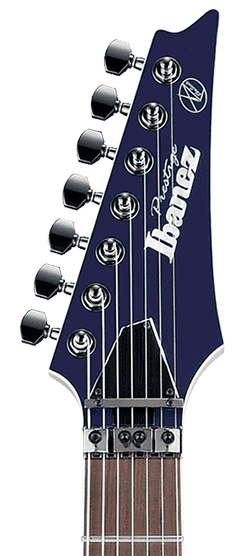 Coming from both a typical 24 3/4 “ and 25 ½” scale length, the make-it or break-it usability test for us is easily the 27” scale length. Someone purchasing this guitar is likely buying the instrument knowing fully that they want this kind of instrument, so for those players the choice is easy. For those of you still wondering what it’s all about, the longer scale length is useful for playing in dropped tunings without getting too much slack and flabbiness on your strings. For us, when we first plugged in the guitar, we were somewhat taken aback by the scale. An inch and a half makes a big difference!
Coming from both a typical 24 3/4 “ and 25 ½” scale length, the make-it or break-it usability test for us is easily the 27” scale length. Someone purchasing this guitar is likely buying the instrument knowing fully that they want this kind of instrument, so for those players the choice is easy. For those of you still wondering what it’s all about, the longer scale length is useful for playing in dropped tunings without getting too much slack and flabbiness on your strings. For us, when we first plugged in the guitar, we were somewhat taken aback by the scale. An inch and a half makes a big difference!
Playing down in the first position, we found the fret spacing extremely generous and seemingly vast. There’s definitely some extra room to spread out here! It was a bit of a stretch for those of us with shorter fingers, but after getting used to the scale, there were no issues, and it was actually quite comfortable. Our shredding required something of a mental shift. When we play a scale in the 12th position we are expecting appropriate fret spacing that we have grown accustomed to. In the case of this guitar, the 12th fret feels like a typical guitar’s seventh fret. While we initially found this a bit awkward, we grew accustomed to the scale length after an hour of djenting around and appreciated it, especially in the upper register of the guitar. Players who aspire to do more than chug out growling riffs will appreciate the extra spacing up in the 17th to the 24th frets. There is far less work there, and lines feel more natural to play. It’s far easier to get around without having to cram our fingers into tightly spaced frets.
Considering the whole point of an extended range guitar is to actually extend its range beyond normal parameters, we figured it was worth a shot to try and tune the low B to drop A tuning. A floating trem is typically not happy about changing string tensions and typically requires adjustment in this scenario. After dropping the low B to an A, we did have to re-tune the instrument, however we found the experience to be relatively painless and the B sting was still pretty stable. We’d imagine a heavier gauge than the supplied .54 would be more appropriate, but the stock string tuned down a whole step performed just fine.
Our final thoughts about the guitar’s scale are that we feel most players can benefit from an extended-range instrument. An unintended side effect was when we went back to regular-scale guitars in a few days, our playing was far smoother and we played faster, and more accurately. It was like having some extra leverage on the guitar that didn’t previously exist. An extended scale guitar for this reason alone becomes an excellent trainer to improve your shredding skills.
Moving on, the Lo-Pro Edge 7 tremolo stayed in tune wonderfully, as expected. The Edge bridges have a notoriously light feel to them. It is definitely a different feel from heavier Floyd Rose-style bridges, and very much a case of personal preference. We have several examples of Edge and Lo Pro Edge tremolos in our collection and have grown to appreciate them. Even for wide bends and dives, the tremolo was smooth and returned to zero perfectly. We did tweak tuning after a few days, but only by a little.
The neck profile was as expected. Although we do not have and cannot locate the specs of our nearly 30-years-old relic, 1990 Ibanez Universe, we find the flat radius and neck dimensions to be somewhat similar and nearly as comfortable as our beloved Universe. This neck is definitely smoother than our meat-and-potatoes seven string Ibanez RG 7620.
Sound
We plugged the Ibanez RG2027XL straight into our interface and decided to have some fun with our Line 6 Helix Native plug-in. Recalling a test session with the Helix set up to output in stereo, we loaded one of our favorite presets based around the Angle Meteor amp model (cleverly named to model the ENGL Fireball). We found the low, chugging riffs to have plenty of character and hair around the notes, with a good balance of tone that both cut through and had plenty of growling low end at the same time. We used the same preset to play a few measures of lead, and we were equally happy with the tonal result. The power chords sounded thick and full through our KRK VXT8 monitor speakers.
Next, we plugged into our Mesa/Boogie Mark V head that was connected to a Mesa oversized Recto 4x12 cab. Selecting the IIc+ mode, we dialed in a healthy amount of gain, bass, and used the preset EQ sweep. As expected, our excitement continued, and we reaffirmed just how much we love the sound of this guitar matched with these pickups and amplifier. The lows were growly but clear. Power chords were earth moving, and through the Mark V there was no flub to be found, even with our bass levels dialed in on the higher side. The highs were smooth and present in the sound, and it was quite aggressive and modern. Single notes had great character.
Dropping back to the neck pickup, we found the volume between the two pickups to be roughly the same. The tone was liquidy in character, yet still had good articulation. Considering the heavy rock and metal beast this guitar has already proven, this sound adds to its versatility yet remains relevant in the intended genre.
Dialing back the gain a bit and switching to the second channel of our amp, we patched some delay via our Eventide H9 in the effects loop and put our Neunaber Chroma Chorus before the amp. Skeptical about how these pickups would sound, we were put at ease quickly by moving the selector switch to the second position. With relatively low amp gain, we had a near pristine, gorgeous clean sound, and we lost an hour playing through it. Great sounds make it hard to put a guitar down, sometimes. The fourth position put the neck pickup in parallel and it also passed our sound test with flying colors. Did it spank like a strat or a Jem? No, but it was still a good, useful sound and added more versatility to a modern metal machine.
 |
Ibanez 2027XL demo by Bruce Sokolovic. Recorded through PreSonus Studio 192 interface into Pro Tools 2018 using Line 6 Helix Native. |
| MPc ENGL Amp Preset Download this preset (click the words above) for your Helix hardware or software and directly compare the sound of this guitar with your other instruments! |
These pickups are truly fantastic, and if they were sold separately, we’d probably upgrade one or more of our other Ibanez 7-string guitars with them.
Lastly, we plugged the Ibanez RG2027XL into our ENGL Powerball II. We wanted another high-gain amp to test this guitar, and this was definitely a hand-to-glove kind of match. Similar to the Mark V, the guitar exhibited all of its richness and detailed tone. Things got even more exciting after dropping the low B to A. With the dropped tuning of this guitar, the ENGL served up modern metal (and classic) tones splendidly. Toggling through all four channels on the Powerball II, our drop A guitar sounded brutal and raw. Even with the dropped tuning, there was excellent note definition and the ENGL seemed to be an exciting match given its high gain, yet well mannered, nature.
Power chords in drop A were truly inspiring. The ENGL’s clean channel afforded us more of that position two spank, which was still surprisingly Stratty sounding given the guitar’s dual humbucker layout with no coil tap. Effects provided by a TC Electronic G-System in this setup shined through beautifully as well.
Documentation and Product Support
A generic, multi-language manual ships with the guitar and describes care and setup. A robust website has all the information on product specs, and there is even a Help and How To section providing valuable setup info and maintenance/care videos. Considering even after 30 plus years of playing, we still continue to learn new tips and tricks when it comes to guitar care, so these videos are well appreciated.
Ibanez provides a standard one-year warranty.
Price
The Ibanez RG2027XL Prestige (MSRP $2,399.99) sells for $1,799.99. Considering this has become our best sounding seven string, even rivaling a cherished vintage Universe which retailed for nearly this price 30 years ago, we’d be hard pressed to not call this guitar a fantastic value.
We must also give credit to the skilled Japanese craftsmen who continue to deliver extremely high-quality instruments in the Prestige line at a reasonable price point. This guitar deserves to be on the modern metal player’s short list for seven-string guitars, regardless of scale length.
Contact Information
Ibanez
www.ibanez.com


